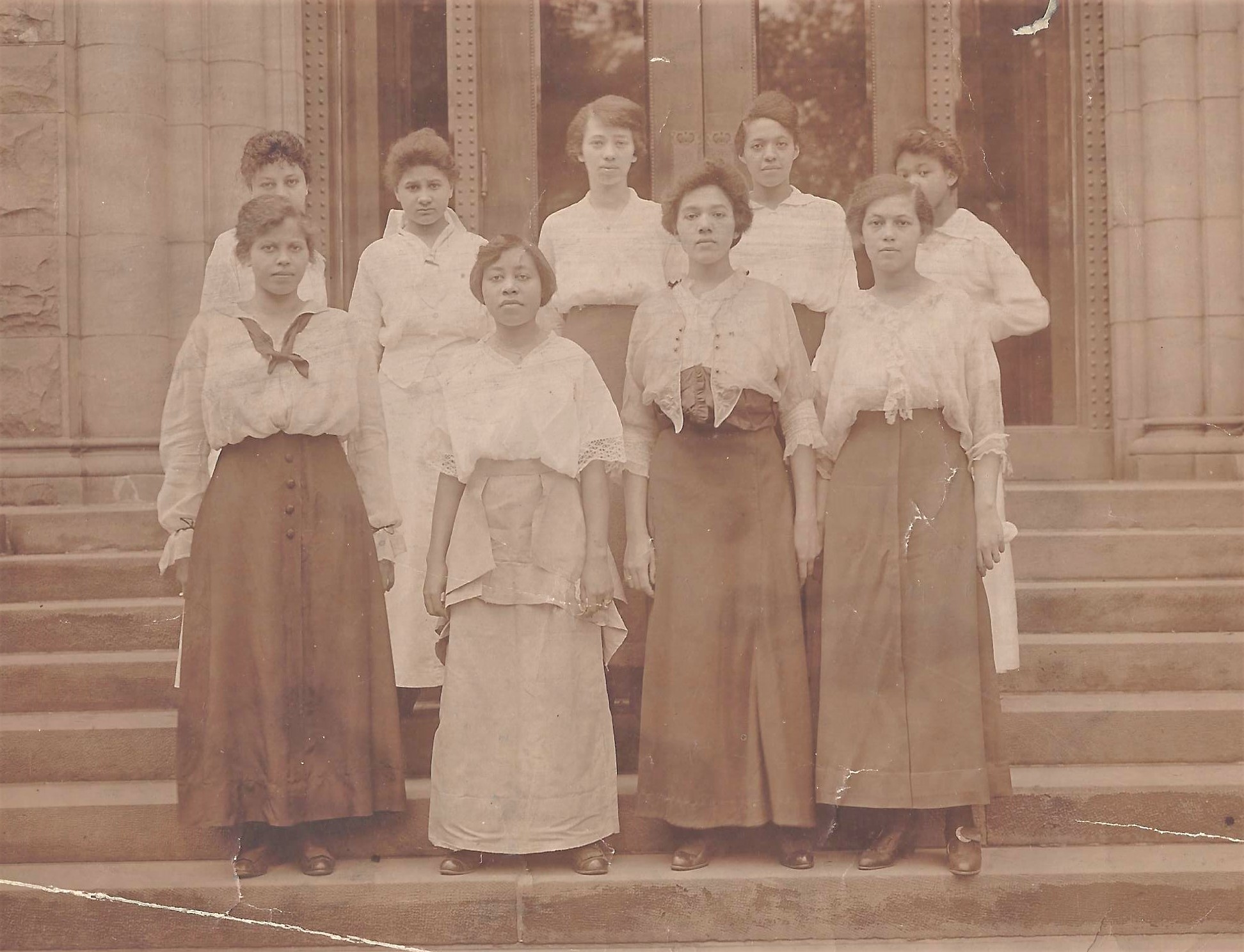The Presence of the “Divine 9” at the University of Illinois
The first Black Greek letter organizations began in the early 1900s when African American students were excluded from dormitories (as was the case at the University of Illinois), study groups and social organizations at predominantly white institutions. Often ostracized, Black students began to organize themselves for mutual academic and social support. As these organizations evolved, they developed the values of scholarship, friendship, service, leadership, and philanthropy. Today, all nine historically Black sororities and fraternities have chapters, commonly known as the “Divine 9,” on the University of Illinois’ campus. Two of the earliest Black Greek organizations, Kappa Alpha Psi Fraternity and Alpha Kappa Alpha Sorority, were the first such organizations on the University’s campus to provide housing for their chapter members. The first residence for Alpha Kappa Alpha (Gamma House) was located at 1201 W. Stoughton in Urbana and the first home for Kappa Alpha Psi was at 707 S. Third Street, in Champaign.
The young women pictured on the steps in 1915 are members of the Gamma Chapter of Alpha Kappa Alpha Sorority which was established at the University in 1914.
Additional facts about the Divine Nine at the University of Illinois:
1913: The Beta Chapter of Kappa Alpha Psi fraternity was chartered. It was the second chapter of the fraternity in the United States. In the 1928 directory, their house was listed at 904 E. Clark Street in Urbana.
1914: The Gamma Chapter of the Alpha Kappa Alpha sorority was chartered. It was the third chapter of the sorority in the United States. In the 1928 directory, their house was listed at 904 E. Stoughton in Urbana.
1917: The Tau Chapter of the Alpha Phi Alpha fraternity was chartered.
May 3, 1924: A Daily Illini editorial condemned a newly revised Inter-Fraternity Council constitution that allowed for the admittance of Jewish fraternities but not African American fraternities.
1929: The Pi Psi Chapter of Omega Psi Phi fraternity was chartered. The first house was at 412 E. Park Street in Champaign and still stands as of 2022.
1932: The Alpha Nu Chapter of Delta Sigma Theta sorority was chartered.
1933: The Inter-Fraternity Council revised its constitution to admit African American fraternities.
1935: With only a few African American fraternities and sororities, Black students primarily engaged in activities in the surrounding African American community. Alpha Phi Alpha and Kappa Alpha Psi established a co-operative African American restaurant—Boyd’s Cafe—the only campus restaurant to serve African Americans other than the University café. It closed after less than a year.
1972: On April 15, the Nu Delta Chapter of Zeta Phi Beta Sorority was chartered. On May 19, the Epsilon Xi Chapter of Phi Beta Sigma Fraternity was charted.
1980: The Alpha Lambda Chapter of Iota Phi Theta Fraternity was chartered.
To learn more about current Black Fraternities and Sororities at the University of Illinois Urbana-Champaign, visit: https://fsaffairs.illinois.edu/join/recruitment/black/.
Decade:
1910-1919
Location(s):
- University of Illinois, Illinois
- Urbana, Illinois
Additional University of Illinois Trail Sites

